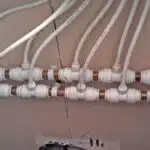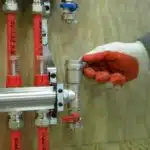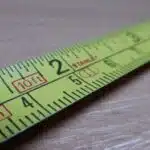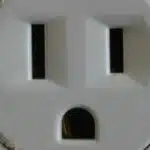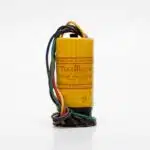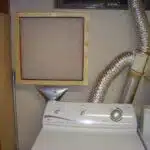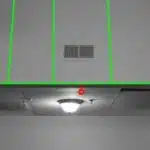As a conduit bender and installation technician, the ability to bend conduit is an essential skill for any professional in this field. Whether you are dealing with electrical or plumbing systems, bending conduit is a necessary process that involves precision and accuracy. Conduit bending can be done using a variety of tools, including manual or electric benders, but there are also techniques for bending conduit without the use of these tools.
In this article, we will discuss how to bend conduit both with and without a bender. We will explore the different types of conduits commonly used in electrical and plumbing installations and highlight the various tools required for successful bending. Additionally, we will delve into the fundamental principles governing the art of conduit bending, including proper measuring and marking techniques. Our aim is to provide comprehensive guidance that empowers professionals in this field to perform their duties with ease, efficiency and safety.
Understanding The Basics Of Conduit Installation
Conduit installation is an essential part of electrical and plumbing systems. Understanding the basics of conduit installation is crucial to ensure proper and safe installation. Common mistakes in conduit installation can lead to faulty installations that may cause safety hazards or damage to equipment.
Safety precautions are important considerations for conduit installation. Before starting any work, the installer must ensure that all power sources are turned off, and the area is clear of any obstructions. Proper personal protective equipment such as gloves, goggles, and earplugs should be worn when cutting, bending, or installing conduits. Additionally, it is important to follow local codes and regulations when selecting the type of conduit to use.
It is also essential to consider the type of conduit used in electrical and plumbing systems. There are various types of conduits available in the market such as metal conduits, PVC conduits, flexible metal conduits, and non-metallic conduits. Each type has its own advantages and disadvantages based on their specific applications. It is important for installers to have a good understanding of each type of conduit before selecting one for their project.
Types Of Conduit Used In Electrical And Plumbing Systems
PVC conduit is a common choice for many electrical and plumbing systems due to its cost efficiency, flexibility and durability. EMT conduit is a thin-walled metal conduit that offers corrosion resistance, strength and flexibility. Flexible conduit is a type of conduit that is designed for tight or curved spaces and is available in metallic or non-metallic materials. Copper conduit is used for higher voltage applications and is known for its excellent electrical conductivity. Steel conduit is a popular choice for electrical and plumbing systems due to its strength and durability. ABS conduit is a lightweight conduit that is often used in plumbing systems due to its chemical and corrosion resistance.
Pvc
One of the types of conduit used in electrical and plumbing systems is PVC conduit. As a professional conduit bender/installation technician, it is important to know the advantages and disadvantages of using this material.
PVC conduit has several advantages, such as being lightweight, easy to install, and resistant to corrosion. It also has a smooth surface that allows for easy wire pulling without causing damage to the wires. Additionally, PVC conduit is affordable compared to other types of conduits in the market, making it an attractive option for those working on a budget.
However, PVC conduit also has its disadvantages. One major drawback is that it cannot withstand high temperatures and may melt if exposed to extreme heat. It can also become brittle over time and crack or break under stress. Furthermore, PVC conduit may not be suitable for outdoor use as it can easily get damaged by UV rays from sunlight exposure. As a professional technician, it is important to evaluate these pros and cons before deciding whether or not to use PVC conduit in a specific project.
Emt
When it comes to types of conduit used in electrical and plumbing systems, PVC is not the only option available. Another popular choice is EMT or Electrical Metallic Tubing. As a professional conduit bender/installation technician, it is important to have knowledge about the advantages and disadvantages of using EMT.
One advantage of using EMT is that it is strong and durable, making it suitable for use in industrial and commercial applications. It also has a smooth surface that makes wire pulling easy and prevents damage to the wires during installation. Additionally, EMT can be easily cut and threaded on site, which makes it convenient for installation purposes. However, proper storage and handling of EMT are crucial to avoid any damage that might compromise its integrity.
On the other hand, one disadvantage of using EMT is that it can corrode over time if not properly installed or maintained. It may also be susceptible to damage from extreme weather conditions such as floods or earthquakes. As a professional technician, it is essential to understand these pros and cons before deciding whether or not to use EMT in a given project. Proper storage and handling of EMT can help prevent damage and ensure its longevity in the long run.
In conclusion, while PVC conduit remains an attractive option due to its affordability and ease of installation, EMT offers durability and strength that make it an ideal choice for industrial or commercial applications. Whether using PVC or EMT, proper storage and handling are necessary for their optimal performance in any project.
Flexible
When it comes to types of conduit used in electrical and plumbing systems, another option available is flexible conduit. Flexible conduit offers numerous benefits that make it a popular choice for both commercial and residential projects. One advantage of using flexible conduit is its ability to bend and twist easily without compromising its integrity, making it suitable for tight spaces or areas with multiple turns. Additionally, flexible conduit can be cut to the desired length on-site, which makes installation more convenient.
As a professional conduit bender/installation technician, having knowledge about the techniques for bending flexible conduit is essential for ensuring proper installation. There are several methods used to bend flexible conduits, including hand-bending or using specialized tools such as pliers or a bending machine. It is important to note that the technique used will depend on the type of conduit being used and the specific project requirements.
In conclusion, while PVC and EMT remain popular choices for conduits in electrical and plumbing systems, flexible conduit offers unique advantages that make it an ideal solution for certain applications. As a professional technician, understanding the benefits of using flexible conduits and proper techniques for bending them can help ensure successful installation and optimal performance in any project.
Tools For Bending Conduit
With the use of conduit, electrical and plumbing systems are made safer and more organized. There are different types of conduit used in these systems such as metal, PVC, and flexible conduit. Each type is suited for specific applications depending on the environment and wiring needs.
When it comes to bending conduit, there are tools available that make the job easier such as a bender. However, sometimes a bender may not be readily available or practical to use. This is where benderless bending comes into play. Benderless bending involves using makeshift tools or techniques to bend conduit without a bender.
There are various makeshift bender ideas that can be utilized when bending conduit without a proper tool. One example is using a wooden block with pre-drilled holes for specific bend angles. Another idea is using a vise grip or pliers to manually bend small sections of conduit at a time until the desired angle is achieved. While these methods may require more effort and precision compared to using a bender, they can be effective alternatives when one is not readily available. In the next section, we will discuss manual conduit bending techniques that can also be used in situations where special tools cannot be accessed.
Manual Conduit Bending Techniques
- Before bending conduit, it is important to mark the bend accurately in order to achieve the desired angle.
- Making the bend requires the use of a conduit bender in conjunction with the appropriate pressure applied in the appropriate direction.
- Hand-bending techniques are used when a conduit bender is not available; this requires a great deal of practice in order to obtain the desired angle.
- Offset bending requires an additional calculation of angles in order to achieve the desired results; this is especially true when making bends of more than 90 degrees.
Marking The Bend
As a conduit bender and installation technician, marking the bend is an important step in ensuring the accuracy of the conduit’s angle and radius. It is essential to measure and mark the location where you will start bending the conduit. The bend angle and radius are crucial factors in determining how well the conduit will fit into its intended space.
When marking the bend on your conduit, you must first determine the desired bend angle. Using a protractor or other measuring tools, ensure that your markings are accurate and consistent with your intended angle. Once you have marked your starting point, it is essential to also measure and mark the desired bend radius to ensure that your final product fits snugly into its intended space.
In summary, marking the bend is a critical step in manual conduit bending techniques. As a professional conduit bender, it is vital to take precise measurements and mark your starting point accurately to guarantee that your final product meets all necessary specifications. By doing so, you can create a perfectly bent piece of conduit that easily fits into any space with minimal effort.
Making The Bend
Manual conduit bending techniques require precision and accuracy to ensure the final product fits its intended space. Making the bend is a crucial step in this process, and it should be done with utmost attention to detail. Common mistakes can lead to costly errors, such as an incorrect bend angle or radius. As a professional conduit bender/installation technician, it is important to know the proper techniques for making the bend.
Precision tips are essential when making the bend. It is imperative to use accurate measuring tools and take precise measurements before marking the starting point. This ensures that your bend angle and radius are consistent with your intended specifications. Troubleshooting techniques can also help you correct any errors during the bending process. For instance, if you notice that your conduit has kinks or other deformations after bending, you can use a reamer or file to smooth out these areas.
Safety measures should also be taken when making the bend. Always wear protective gear such as gloves, eyewear, and earplugs when using manual conduit bending tools. Ensure that your workspace is free of any hazards that could cause injury or damage to equipment. By following these guidelines, you can create perfectly bent pieces of conduit without risking harm to yourself or others on the job site.
Electric Conduit Bending Techniques
Bending conduit is an essential skill for any professional in the electrical installation industry. It requires a combination of precision and creativity to maneuver the metal tubing into the desired shape without compromising its integrity. The process can be challenging, but with expert bending techniques, it can be accomplished efficiently and accurately.
Bending challenges vary depending on the type of conduit and the angle required for installation. However, one of the most significant obstacles is avoiding kinks or flattening sections of the pipe during bending. This occurs when too much pressure is applied to one area or when there is insufficient support for the conduit. To overcome this challenge, benders must have a keen eye for detail and carefully assess each bend’s position before applying force.
Expert bending techniques involve using specialized tools such as hand benders or hydraulic benders to create precise angles without damaging the conduit’s interior surface. These tools allow for a more controlled approach to bending, reducing errors and ensuring that each bend meets exact specifications. Additionally, utilizing proper leverage techniques can help distribute pressure evenly throughout the length of the conduit, minimizing potential damage during bending.
Tips for successful conduit bending:
Use high-quality tools specifically designed for conduit bending.
Make sure to measure and mark your conduits accurately before beginning any bends.
Pay extra attention to areas where multiple bends are required.
Always apply pressure gradually and use support devices whenever possible.
With these expert techniques in mind, electricians can easily tackle even complex installations with confidence. In our next section, we will explore how to measure and mark conduit accurately to prepare it for efficient bending without compromising quality.
How To Measure And Mark Conduit
After learning about electric conduit bending techniques, it is important to understand how to accurately measure and mark conduit before attempting to bend it. Measuring accuracy is crucial in ensuring that the conduit fits properly and does not require any additional adjustments. In addition, marking techniques are essential for indicating the exact locations where bends need to be made.
To achieve measuring accuracy, it is recommended to use a tape measure that is at least 25 feet long. This will allow for precise measurements that take into account any potential obstacles or obstructions in the path of the conduit. It is also important to use a level when measuring horizontal runs and a plumb bob when measuring vertical runs. These tools ensure that measurements are taken correctly and that the conduit will be installed properly.
Marking techniques include using colored chalk or paint to indicate where bends need to be made on the conduit. It is crucial that these markings are accurate and easily visible throughout the entire installation process. There are also specialized marking tools available that make it easier to create accurate markings on the conduit.
Overall, proper measuring and marking techniques are essential for successful electric conduit installation. By taking precise measurements and making accurate markings, installers can ensure that bends are made correctly and the conduit fits perfectly in its designated location. The next section will cover how to calculate conduit bends without using a bender.
| Positive Emotion | Negative Emotion | Neutral Emotion |
|---|---|---|
| Joyful | Frustrated | Confused |
| Excited | Anxious | Indifferent |
| Grateful | Disappointed | Calm |
As an installer, it is important not only to have technical skills but also an understanding of how emotions can impact customers’ satisfaction with our work. Incorporating positive emotions such as joy, excitement, and gratitude while avoiding negative emotions like frustration or disappointment can lead to a more satisfying experience for both us as installers and our customers.
In the next section, we will discuss how to calculate conduit bends without using a bender. This technique can be useful in situations where a bender is not available or when working with smaller diameter conduit. It is important to understand the calculations involved in this process in order to ensure accurate and efficient installation of the conduit.
Calculating Conduit Bends
Calculating Conduit Bends is an essential aspect of conduit bending. An accurate bend radius and degree of bend accuracy should be considered to achieve precise bends. The bend radius refers to the distance from the centerline of the conduit to the centerline of the bend.
To calculate a conduit’s bend radius, determine the desired angle of the bend and divide that by 360. Next, multiply that number by the total length of conduit used for the bend. The result is your required distance for a single 360-degree revolution around the center point. Keep in mind that different conduits may have different minimum bending radii, so it’s important to consult with manufacturers’ specifications before beginning any project.
The degree of bend accuracy refers to how closely your final bent conduit matches your intended design. To ensure accurate bends, you must take into account several factors such as conduit diameter, wall thickness, and material flexibility. Accurate measurements are crucial in determining where to place your marks for bending and will help you avoid costly mistakes during installation or later on during operation. In our next section, we’ll cover tips for achieving precise bends without using a bender tool.
Tips For Achieving Precise Bends
As a conduit bender/installation technician, achieving precise bends is essential to ensuring the proper installation of an electrical system. Using heat can be a helpful technique when bending conduit, especially when dealing with thicker or more rigid materials. By using a heat source such as a torch, you can soften the metal and make it easier to bend without causing it to crack or break.
Another key factor in achieving precise bends is fine-tuning angles. Even small variations in angle measurement can have significant consequences for the overall functionality of the electrical system. To achieve the most accurate results, it’s important to use measuring tools such as protractors and ensure that your measurements are consistent throughout the entire process.
By mastering these techniques, you can optimize your conduit bending skills and provide your clients with reliable electrical systems that meet their needs. In the next section, we will discuss common mistakes to avoid when bending conduit and how to troubleshoot any issues that may arise during installation.
Common Mistakes To Avoid When Bending Conduit
- Accurate measurements are key when bending conduit in order to ensure the conduit pipe is bent according to the desired specifications.
- It is important to support the conduit when bending in order to avoid kinking or damage to the conduit pipe.
- Pre-bending conduit is often necessary in order to ensure proper bends are made and to maintain the integrity of the conduit pipe.
- Not properly measuring the conduit prior to bending can result in errors in the final bend, causing problems during installation.
- Not supporting the conduit properly can cause kinks and damage to the conduit, resulting in costly repairs or replacements.
- Failing to pre-bend the conduit can lead to improper bends, resulting in misaligned connections and additional labor costs.
Not Measuring Properly
Common mistakes in conduit bending can lead to costly errors during installation. One common mistake that many novice benders make is not measuring properly. Failing to take precise measurements can result in incorrect bends, leading to wasted time and materials. As a conduit bender/installation technician, it is crucial to avoid this error by carefully measuring and double-checking measurements before making any bends.
Troubleshooting can be challenging when dealing with errors caused by improper measurements. It can be frustrating for both the installer and the customer when a job needs to be redone due to inaccurate measurements. To avoid this issue, always use accurate measuring tools such as a tape measure or ruler, and ensure that all measurements are taken from the same reference point every time.
Precision is key when bending conduit, and avoiding errors caused by poor measurement practices is crucial for a successful installation process. Taking the extra time to measure accurately will pay off in the long run by reducing wasted materials and ensuring that the installation meets all necessary safety codes. By committing to precise measuring practices, you can provide high-quality services that meet your customers’ needs while also avoiding common mistakes that could compromise your workmanship.
Not Supporting The Conduit
When it comes to conduit installation, not supporting the conduit properly can lead to costly mistakes that can compromise the safety and functionality of the entire system. Conduit support methods are essential for ensuring that the conduit stays in place and meets all necessary safety codes. As a professional conduit bender/installation technician, it is crucial to understand the importance of proper conduit support and avoid this common mistake.
Failing to provide adequate support for the conduit can result in sagging or bending, which can lead to damage or even failure of the installation. This is particularly true for heavy or long runs of conduit, where extra support may be required. To avoid this issue, ensure that all bends are properly supported using approved methods such as clamps and hangers.
By committing to proper conduit support practices, you can ensure that your installations meet all necessary safety codes while also providing high-quality services that meet your customers’ needs. Whether you are working on a residential or commercial project, taking the time to install conduit properly and securely will pay off in the long run by reducing costly errors and ensuring that your customers are satisfied with your workmanship.
Not Pre-Bending
As a professional conduit bender/installation technician, it is essential to understand the common mistakes that can compromise the safety and functionality of the entire system. One such mistake is not pre-bending the conduit before installation. Not pre-bending the conduit can lead to costly errors, including incorrect measurements and excessive waste of materials. As a result, alternative techniques and creative solutions must be incorporated to avoid this mistake.
Pre-bending the conduit ensures that it is bent correctly and fits perfectly into its intended location. It also reduces the risk of damaging or wasting materials during installation. To pre-bend the conduit, professionals use specialized tools such as a bending machine or hand bender. Pre-bending also allows for creative solutions to be implemented when dealing with tight spaces or difficult angles.
In conclusion, not pre-bending the conduit before installation is a common mistake that must be avoided by professional conduit bender/installation technicians. Incorporating alternative techniques and creative solutions such as pre-bending will ensure that installations meet all necessary safety codes while providing high-quality services that meet customers’ needs. By committing to proper practices and avoiding common mistakes such as this one, professionals can guarantee customer satisfaction while reducing costly errors in their workmanship.
Safety Precautions When Bending Conduit
When it comes to bending conduit, safety is of utmost importance. Before beginning any bending task, it is crucial to wear personal protective equipment (PPE) such as safety glasses, gloves, and hard hats. This will help prevent any injuries that may occur during the bending process. It is also important to maintain proper body posture while bending conduit to avoid any strain or muscle injury.
Identifying the material of the conduit is another essential step in ensuring safe bending practices. Different materials require different techniques and tools for bending. Careful handling is necessary when working with conduits made of metal or PVC as they can be sharp and pose a hazard if not handled properly. In addition, certain types of conduits may contain hazardous materials such as lead, which requires extra precautions during handling.
In summary, observing safety precautions should always be a top priority when bending conduit. Wearing PPE and maintaining proper body posture are critical steps in avoiding accidents and injuries on the job site. Identifying the material of the conduit and handling potential hazards with care will ensure safe and efficient installation practices.
Moving forward into troubleshooting conduit bending issues, it is important to understand common problems that arise during the process and how to address them effectively.
Troubleshooting Conduit Bending Issues
As the saying goes, “Practice makes perfect.” However, even with years of experience in conduit bending, issues may arise that require troubleshooting. Common solutions to these problems include adjusting the bender tool, checking the measurements and angles of the conduit, and ensuring proper alignment. Expert advice for troubleshooting conduit bending issues includes reviewing best practices and techniques for perfecting conduit bends.
One common issue that may arise is a kink or crimp in the conduit during the bending process. This can be caused by incorrect placement of the bending tool or improper force applied during the bend. To avoid this issue, it is important to follow proper technique when using a bender and ensure that measurements are precise before beginning the bend.
Another issue that may occur is a flattened or oval-shaped bend instead of a smooth curve. This can be caused by either using too much force while bending or not enough support behind the conduit during the process. Best practices for avoiding this issue include using a level to ensure accurate alignment and providing ample support behind the conduit with your foot or other means.
Troubleshooting conduit bending issues requires attention to detail, patience, and expertise in best practices and techniques. By following these guidelines and adjusting as needed throughout the process, perfecting conduit bends becomes an achievable goal for any installation technician. In our next section, we will explore how to bend conduit around obstacles without compromising accuracy or safety.
How To Bend Conduit Around Obstacles
Bending conduit with a bender is the most efficient and accurate way to get the desired shape. It is important to be aware of the conduit bender’s capacity and limitations in order to prevent over-bending. Bending conduit without a bender is possible, but is more difficult to achieve precise results. When bending conduit around obstacles, it is important to measure the distance between the obstacle and the conduit so that the desired shape can be achieved. Proper technique must be used when bending conduit around an obstacle in order to prevent kinks in the conduit. When working with bends that are close together, it is important to consider the radius and degree of the bends in order to ensure a smooth transition.
Bending With A Bender
Bending conduit with a bender is the most common method used by professional electricians. A bender is a device that helps create precise bends in conduit without causing kinks or damaging the material. To ensure accurate and safe bending, it is essential to maintain your bender regularly. Proper maintenance involves lubricating moving parts, inspecting for wear and tear, and tightening any loose screws or bolts.
Despite being an efficient tool, using a bender can sometimes present unique challenges. One of the most common problems faced by electricians when using a bender is incorrect measurements. To avoid this issue, always double-check your measurements before making any bends. Another issue that may arise is material damage caused by over-bending or under-bending. This problem can be addressed through careful adjustment of the bender’s angle and pressure.
When troubleshooting common bender issues, it is important to keep safety in mind at all times. Always wear appropriate personal protective equipment (PPE) such as gloves, eye protection, and earplugs when operating a bender. In case of more complicated problems with your bender, such as mechanical failure or malfunctioning hydraulic systems, seek assistance from a qualified technician immediately to prevent further damage to the tool or injury to yourself. By maintaining your bender regularly and addressing any issues promptly, you can continue to efficiently bend conduit around obstacles for years to come.
Bending Without A Bender
Bending conduit around obstacles is an essential skill for professional electricians. While using a bender is the most common method, sometimes situations arise where a bender cannot be used. In these cases, alternative bending methods must be employed. One such method is using heat to bend conduit.
Using heat to bend conduit involves applying heat to a specific area of the conduit using a propane torch or other heating device until it becomes pliable enough to bend manually. Electricians must exercise caution when using this method as overheating can cause damage to the material or create weak spots that could lead to future failures. Additionally, this method requires careful measurements and planning, since over-bending or under-bending can result in uneven curves or cracks in the conduit.
While using heat can be an effective way of bending conduit without a bender, it requires experience and skill. Novice electricians should not attempt this method without proper training and supervision from an experienced technician. Ultimately, whether using a bender or alternative methods like heat bending, safety should always be paramount. Proper personal protective equipment (PPE) should always be worn, and all tools should be maintained regularly for optimal performance and longevity.
Bending Around Obstacles
As a professional conduit bender and installation technician, it is common to encounter obstacles when bending conduit. These obstacles can range from walls, corners, or even other pipes that cross the path of the conduit. Overcoming these challenges requires creative solutions and alternative bending methods.
One such method is to bend the conduit in multiple sections around the obstacle, creating a series of smaller bends that can be joined together using couplings or connectors. This technique requires careful measurement and planning to ensure that each section of the conduit aligns correctly and does not create uneven curves or kinks.
Another solution is to use specialized tools such as offset benders or hydraulic benders, which can bend conduit at specific angles around an obstacle without requiring multiple sections. These tools can be expensive and require proper training and experience to use effectively but can save time and effort in certain situations.
In summary, bending conduit around obstacles presents unique challenges for electricians. However, by utilizing creative solutions and alternative methods like multiple bends or specialized tools, these challenges can be overcome with skill and precision. As always, safety should remain a top priority when bending conduit, regardless of the method used.
Bending Conduit For Different Applications
Bending conduit is a crucial skill for any technician who works with electrical installations. Whether it’s for residential, commercial, or industrial applications, there are various bending techniques that technicians can use to create the perfect bend. One of the most important things to consider when bending conduit is the space in which you’re working. Tight spaces require different techniques than larger ones.
For tight spaces, technicians can use hand benders or manual conduit benders to create bends. These tools allow for precise bends without taking up too much space. Another technique that can be used in tight spaces is the heat method. This involves using a heat gun to warm up the conduit before bending it manually. By heating up the conduit, it becomes more pliable and easier to bend without breaking.
There are also advanced techniques that experienced technicians use when bending conduit for complex installations. These techniques include using hydraulic benders or programmable benders that allow for precise and consistent bends every time. These advanced methods require specialized equipment and training, but they can save time and improve efficiency on larger projects. By mastering these techniques, technicians can ensure that their installations are safe and meet all necessary standards.
Transition: Now that we’ve discussed some of the basic bending techniques, let’s explore some of the more advanced methods used by experienced professionals in the field of conduit bending.
Advanced Conduit Bending Techniques
Back in the day, conduit bending was a long and tedious process that required a lot of manual labor. However, with the advent of modern technology, things have changed for the better. As advanced conduit benders, we are always looking for ways to improve our skills and make the process more efficient. In this section, we will explore some advanced techniques like reverse bending and offset bending that can help take your conduit bending game to another level.
Reverse bending is a technique that is used when you need to change the direction of your conduit without using a bender. It involves cutting the conduit at an angle and then making another cut on the opposite side. This creates two pieces that can be bent in opposite directions to achieve the desired angle. Reverse bending is especially useful when working with tight spaces where a traditional bender cannot fit.
Offset bending is another technique that can be used to change the direction of your conduit without using a bender. It involves making two bends in opposite directions on one piece of conduit. The first bend is made in one direction, while the second bend is made in the opposite direction. This creates an offset or jog in the middle of your conduit, which allows you to bypass obstacles or change direction without having to install additional fittings.
Mastering the art of conduit bending takes time, practice, and patience. Advanced techniques like reverse bending and offset bending require precision and attention to detail. However, with dedication and hard work, anyone can become proficient in these techniques and take their skills to new heights. In our next section, we will delve deeper into some tips and tricks for mastering these advanced techniques and becoming a true expert in conduit bending.
Mastering The Art Of Conduit Bending
Advanced Conduit Bending Techniques have equipped you with the knowledge and skills necessary to perform complex bends in conduit installations. However, there are times when you may not have access to a bender or may need to make minor adjustments on the fly. In such cases, knowing how to bend conduit without a bender is essential.
Developing muscle memory is crucial when it comes to bending conduit without a bender. You must be able to visualize the desired bend angle and position your body accordingly. Start by marking the conduit at the desired bend location and using a pipe cutter to score a line around it. Next, apply pressure on one side of the scored line while gripping the other side with pliers. Finally, use your body weight and leverage to gradually bend the conduit until you achieve the desired angle.
Perfecting your technique takes time and practice. One way to do this is by creating a mock-up of various angles using scrap pieces of conduit. This will help you understand how much force and leverage is required for different angles and develop your muscle memory accordingly. Additionally, experimenting with different hand positions and body postures can help you find what works best for you.
Mastering the art of conduit bending without a bender can save time and money in situations where tools are limited or adjustments need to be made quickly. Developing muscle memory through visualizing bends, scoring lines, applying pressure, leveraging body weight, and perfecting techniques through practice can lead to efficient installations that meet your clients’ needs while showcasing your expertise as an installation technician.
Conclusion
Conduit installation is an essential part of electrical and plumbing systems in residential, commercial, and industrial settings. Understanding the basics of conduit installation is crucial for any professional conduit bender or installation technician. This article has provided a comprehensive guide on how to bend conduit with and without a bender.
From manual to electric conduit bending techniques, this article has covered everything from the tools required to the advanced techniques used in bending conduit around obstacles. It is interesting to note that according to a recent industry report, the global electrical conduit market size was valued at $5.6 billion in 2019 and is expected to grow at a CAGR of 4% from 2020 to 2027. This highlights the increasing demand for efficient and effective conduit installation services across various industries.
As a professional conduit bender or installation technician, it is important to master the art of bending conduits while adhering to safety guidelines. With this guide, you can learn how to bend conduits with ease using different techniques and tools available. Whether you are working on residential or commercial projects, this article provides valuable insights into mastering the art of conduit bending for different applications. By following these guidelines, you can ensure that your installations are safe, durable, and meet all relevant industry standards.
Image Credits
- “self serve dispensary – The People’s Supermarket a co-op: Lamb’s Conduit St London” by mermaid99 (featured)



